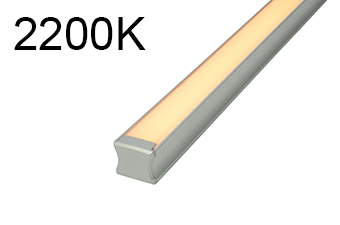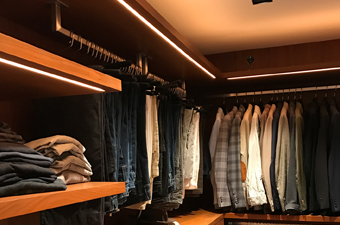Color Temperature Selection Guide
Use the following to help you select the right color temperature for your space
Color Temperature is one of the most important qualities of white lighting. Color Temperature represents the hue of white produced by a light source. Color Temperature is given in Kelvins (K) units. Warmer Color Temperatures (lower K value) appear to have a yellowish-orange hue to them, where as cooler color temperatures (higher K value) are said to produce a blueish hue. Color Temperature of a light source is a completely subjective matter, but general rule-of-thumb is to keep color temperature consistent throughout the space. If your home is fitted with 2700K incadecent bulbs throughhout, it is recommended that you select LED lighting in this same range. Use the following as a guide in helping you select the best color temperature for your space. Generally, warmer color temperatures (lower K value) are better suited to more classical design schemes, whereas cooler color temperatures (higher K value) are better suited to more modern design schemes. Warmer light is perceived to make red, orange, and yellow hues pop, but dull green, blue, and purple hues. Cooler color temperatures are perceived to do the opposite.
Note: The higher the color temperature (K value) the cooler a light source is. Color Temperature does not correlate with light intensity (brightness).
**Not all LED Strips, LED Bars, and LED Fixtures are available in all listed color temperatures. Refer to product options for available color temperatures**
 |
 |
2200K: Our warmest stocked color temperature offering. 2200K produces a very warm glow of light, similar to light given off from a candle. Use it when your space has a lot of natural wood as it will enhance the rich burls and textures. It is also the most popular color temperature for outdoor and patio lighting. Warmer color temperatures make red, orange, and yellow hues seem more vivid, but can dull blue, green, and purple hues. |
 |
 |
2700K: The color temperature produced by a traditional incandescent light bulb. It is the most "traditional" feeling color temperature, a classic warm white. If your space uses a lot of Incandescent lighting, this is a great color temperature to use. Very popular for restaurants and other hospitality applications |
 |
 |
3000K: Our most popular color temperature! 3000K is the perfect color temperature to choose when you want a touch of warmth, without having that overwhelmingly yellow hue that the warmer color temperatures can be perceived to have. 3000K is a highly adaptable color temperature that works well with most design types. |
 |
 |
4500K: We call 4500K "Natural White," because it is the most neutral tone we offer. It is mostly just plain white light, but with a drop of warmth (a traditional fluorescent is 5000K). It is most commonly used for closet lighting, retail lighting, and jewelry display case lighting because it saturates all color hues equally. |
 |
 |
6500K: Our coolest color temperature offering! 6500K can be perceived to have a slight blueish hue. It is most commonly used in offices, retail spaces, and schools where a more stark white light source is desired. 6500K compliments more modern design schemes that use a lot of blue, green, and purple hues. |
